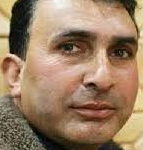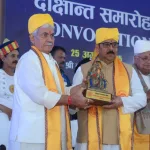Tourism in Kashmir is not just an economic pursuit—it is the heartbeat of the region’s social, cultural, and psychological well-being. Nestled in the lap of the Himalayas, the Valley has long attracted visitors with its breathtaking beauty, warm hospitality, and rich cultural heritage. However, the recent Pahalgam terror attack, like many before it, has once again cast a shadow over Kashmir’s tourism-driven economy and disrupted its fragile social fabric.
Such incidents send ripples of fear across the region. Tourists cancel plans. Local markets, even in off-season, fall silent. Shops pull down shutters earlier than usual, and an eerie quiet replaces what should be the hum of commerce and laughter. The rhythm of life—maintained by the presence of visitors and the vibrancy they bring—is abruptly interrupted.
In this context, the return of tourism is not just important—it is vital. It is not merely about reviving the economy, but about restoring hope, challenging the very intent behind acts of terror, and rebuilding confidence within and beyond the Valley.
Economic Lifeline: The Backbone of Livelihoods
Tourism forms a significant pillar of Kashmir’s economy. From the serene shikaras on Dal Lake and the ski slopes of Gulmarg to the spiritual charm of Pahalgam, the region offers experiences that sustain a vast network of livelihoods.
An estimated 20% of Kashmir’s population depends directly or indirectly on tourism. This includes hotel owners, transporters, guides, pony handlers, houseboat operators, artisans, and many more. Each tourist’s visit sparks a ripple effect—creating demand for food, transport, handicrafts, entertainment, and hospitality.
Kashmir’s renowned handicrafts—Pashmina shawls, hand-knotted carpets, papier-mâché art, and walnut wood carvings—find a substantial market in tourism. These items carry cultural significance, preserving heritage while supporting thousands of artisans.
The Pahalgam carnage disrupted the rising curve of post-pandemic tourism. Tour packages were scrapped. Hotel bookings dried up. Even areas like Srinagar’s Residency Road and Lal Chowk, typically resilient, saw an alarming dip in footfall. Tourism, here, is not a luxury—it’s survival.
Fear’s Invisible Toll
The economic loss is apparent, but the psychological damage runs deeper. Every violent event reopens wounds of the past, compounding decades of trauma. Fear spreads beyond tourists—locals become wary. Shopkeepers close early. Street vendors vanish. The usual buzz of public spaces fades.
For a society trying hard to reclaim normalcy, this is devastating. Schools, markets, casual social interactions—all serve as anchors to a semblance of peace. When those anchors are shaken, the sense of security and connection erodes. Worse, prolonged decline reinforces external perceptions of Kashmir as a zone of endless conflict, further deepening the Valley’s alienation. Kashmiris yearn not to be defined by terrorism, but by their culture, art, and warmth. Restoring tourism helps correct this narrative.
Tourism: A Bridge of Trust and Belonging
Tourism isn’t just about economics; it’s about connection. Visitors to Kashmir engage with real people and real stories—beyond what headlines portray. They sip kahwa with locals, share meals in dhabas, buy souvenirs from artisans, and chat with shikara operators.
These small, personal interactions foster understanding and challenge prejudice. They build bridges between Kashmir and the rest of India—and the world. They create empathy and dissolve myths.
When these interactions cease, mistrust festers. A vacuum opens, often filled with misinformation and suspicion. Resuming tourism, therefore, is not only a financial imperative—it is a symbolic act of integration and national solidarity.
Engaging Youth: Channeling Energy, Preventing Drift
Kashmir’s youth form a large portion of its population. However, opportunities are scarce, and frustration is high. In such a context, tourism offers a meaningful alternative. Young Kashmiris work as tour guides, ski instructors, photographers, drivers, content creators, and customer service professionals. Many run start-ups or small businesses in the travel and hospitality sector.
Violence and instability rob them of these opportunities. When tourism slows, so does engagement. Disillusionment creeps in, and in the absence of constructive outlets, some may drift toward radical influences. Investing in tourism is, thus, investing in youth empowerment, social stability, and future leadership.
Women’s Participation: A Silent Revolution
In recent years, Kashmiri women have made remarkable inroads into the tourism sector. Many now operate homestays, cafés, handicraft boutiques, and trekking services. Their presence is reshaping gender roles in a traditionally conservative society.
Tourism has brought not just income, but confidence, independence, and visibility. But progress is fragile. In the wake of recent terror attack, families grow apprehensive about allowing women to continue in public-facing roles. The gains in gender empowerment can be quickly reversed. Protecting and promoting tourism means safeguarding women’s economic freedom and encouraging their continued participation in Kashmir’s future.
The Ripple Economy: Beyond Hotels and Taxis
Tourism fuels a complex web of ancillary businesses. Farmers supplying fresh produce to hotels, bakers baking bread for guest houses, florists selling bouquets to honeymooners, tailors stitching pherans, and local transporters ferrying tourists—all benefit from tourism. Even barbers, cobblers, and chemists in tourist-frequented areas experience higher footfalls.
When tourism thrives, so does this interconnected micro-economy. When it falters, losses cascade. In commercial hubs like Rajbagh, Lal Chowk, and Dalgate, business owners have recently reported steep drops in income. The fallout isn’t limited to numbers—it erodes the vitality of public life.
Healing and Resistance: Tourism as a Statement
In a land burdened by history and grief, tourism is more than leisure—it is therapy. The sight of tourists smiling on a street, sipping tea by the Jhelum, or buying a Kashmiri shawl is emotionally uplifting. It offers a break from the narrative of despair.
Every tourist’s return is a vote of confidence. Every reopened café, every busy market stall, every conversation with an outsider—reclaims space from fear. In that sense, tourism becomes an act of peaceful resistance. A declaration that Kashmir, despite everything, chooses life.
The Role of Media and Government: Responsibility and Resolve
For tourism to recover, state machinery and media must act decisively. The government must ensure safety in tourist zones, upgrade infrastructure, promote responsible tourism campaigns, and address the specific concerns of those in the hospitality sector. Relief packages, tax exemptions, and upskilling programs for youth and women are essential.
Equally important is the role of media. Rather than amplifying fear and sensationalizing isolated incidents, it must highlight resilience, courage, and the untold stories of hospitality that Kashmir is known for. Every positive story reported is a brick in rebuilding public confidence.
Conclusion: More Than a Destination—A Dialogue of Peace
Kashmir needs tourists now more than ever—not just for survival, but for healing. The return of tourism is a moral and social necessity. It is a rejection of fear and a restoration of dignity. It is a celebration of life, culture, and resilience.
Kashmiris are not pleading for pity—they are inviting engagement. They want the world to witness their strength, their traditions and their dreams. By returning as tourists, we do more than spend money—we affirm hope. We say, unequivocally, that Kashmir is not just a land of conflict but a land of courage and connection.
Let us not let violence define Kashmir. Let us let humanity, hospitality, and heritage reclaim its narrative.
(Author is a freelancer, national TV debater, and columnist. He can be reached at [email protected]








